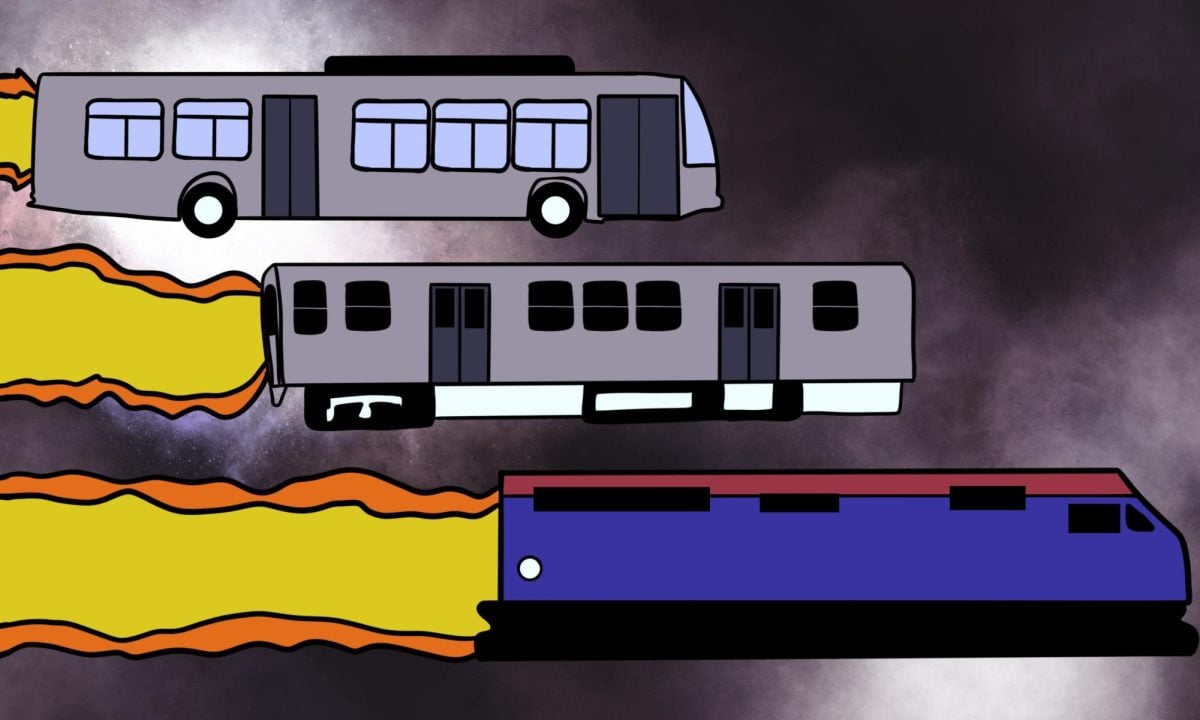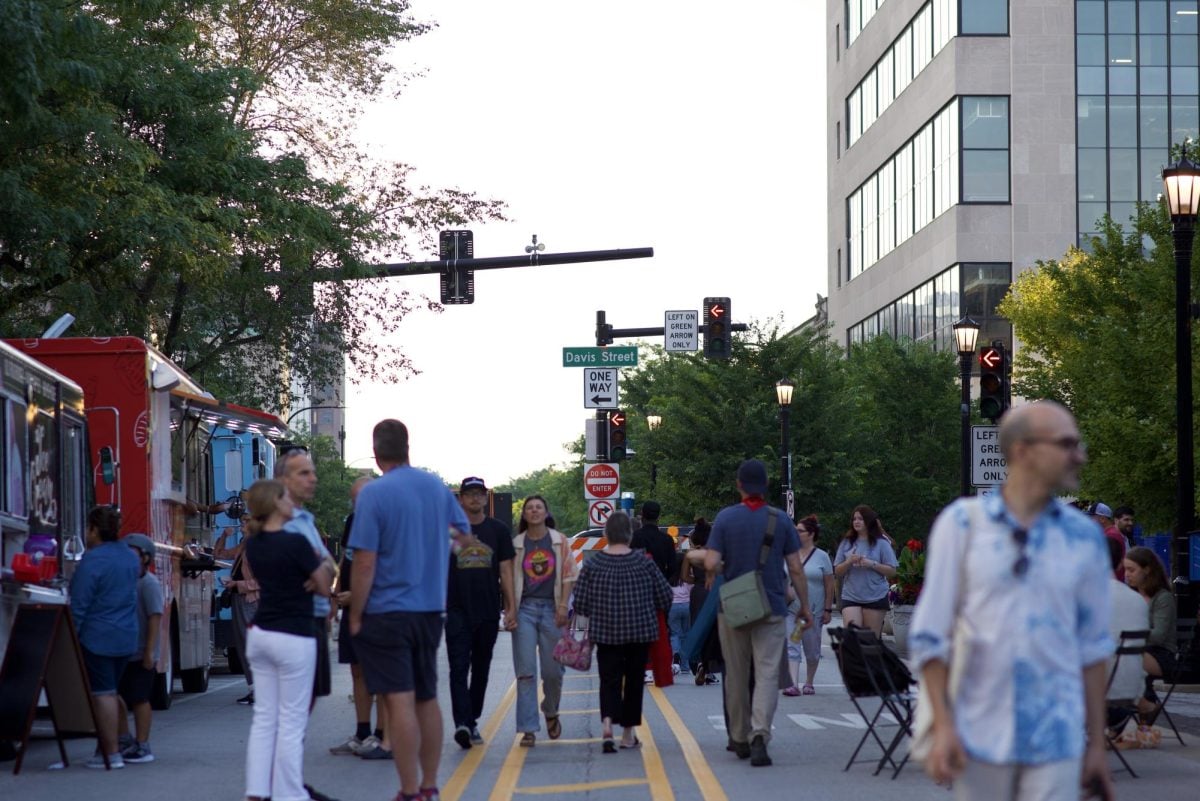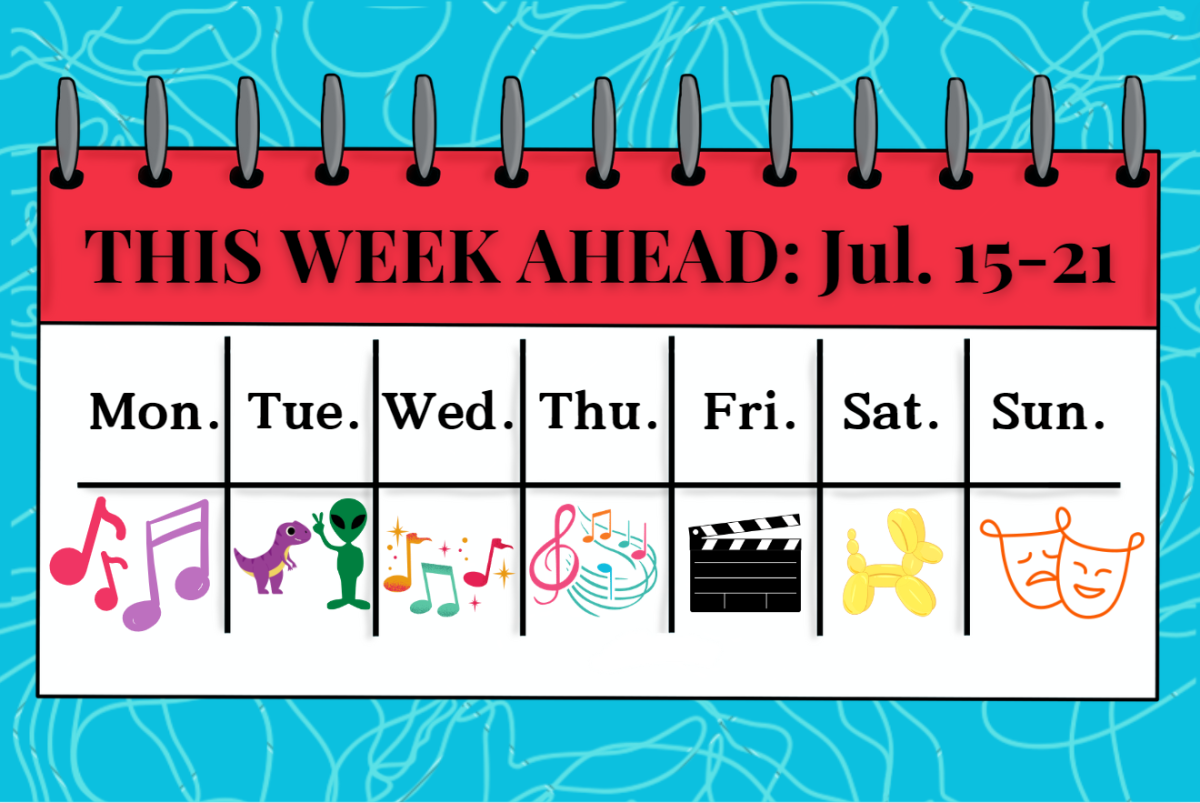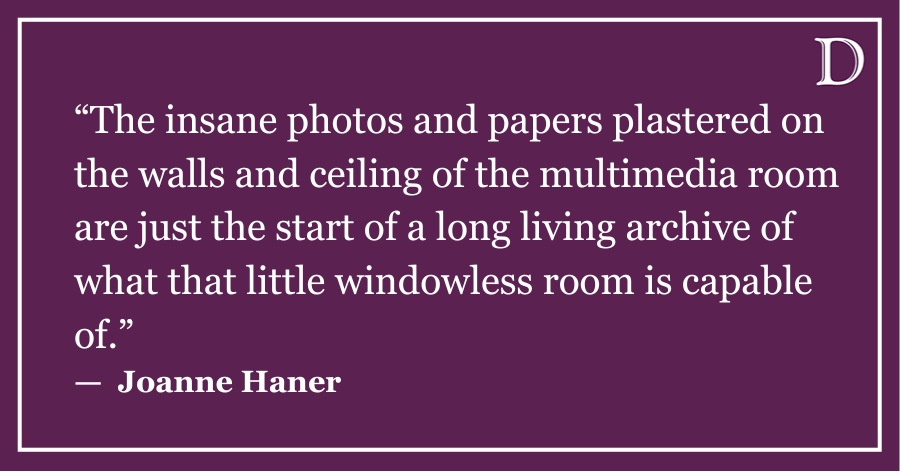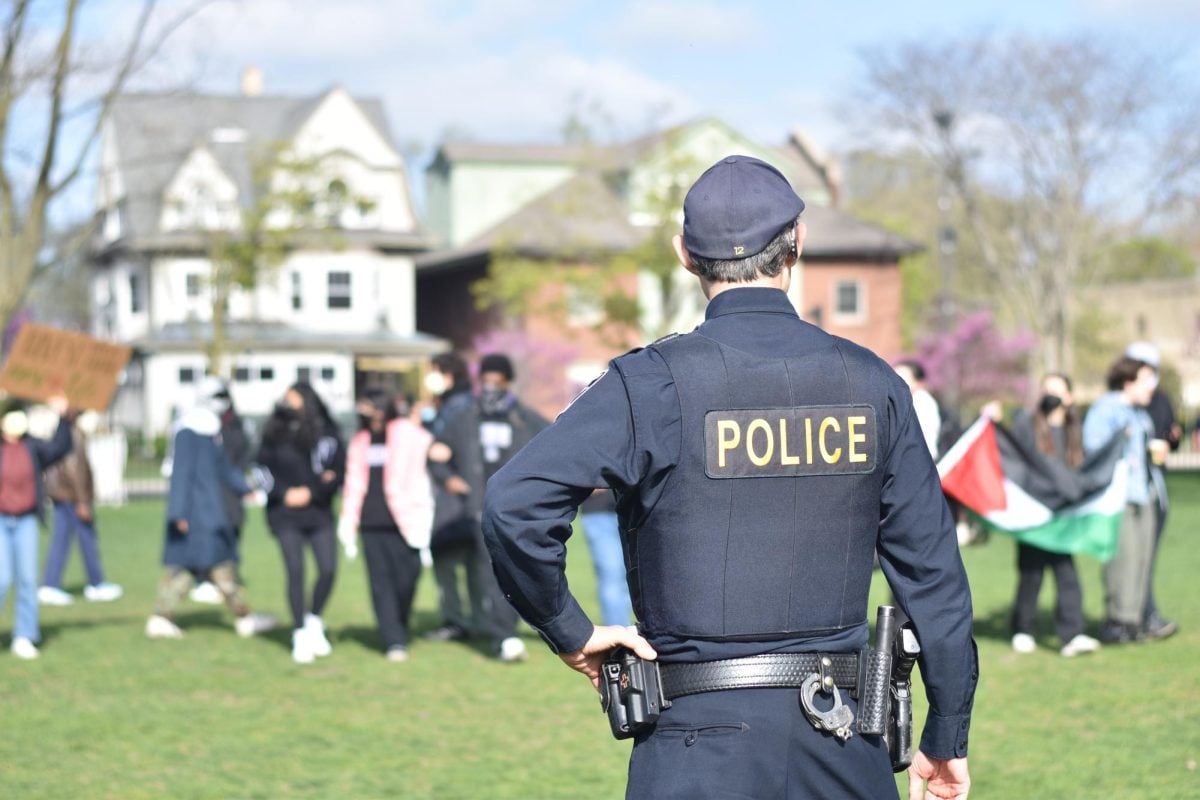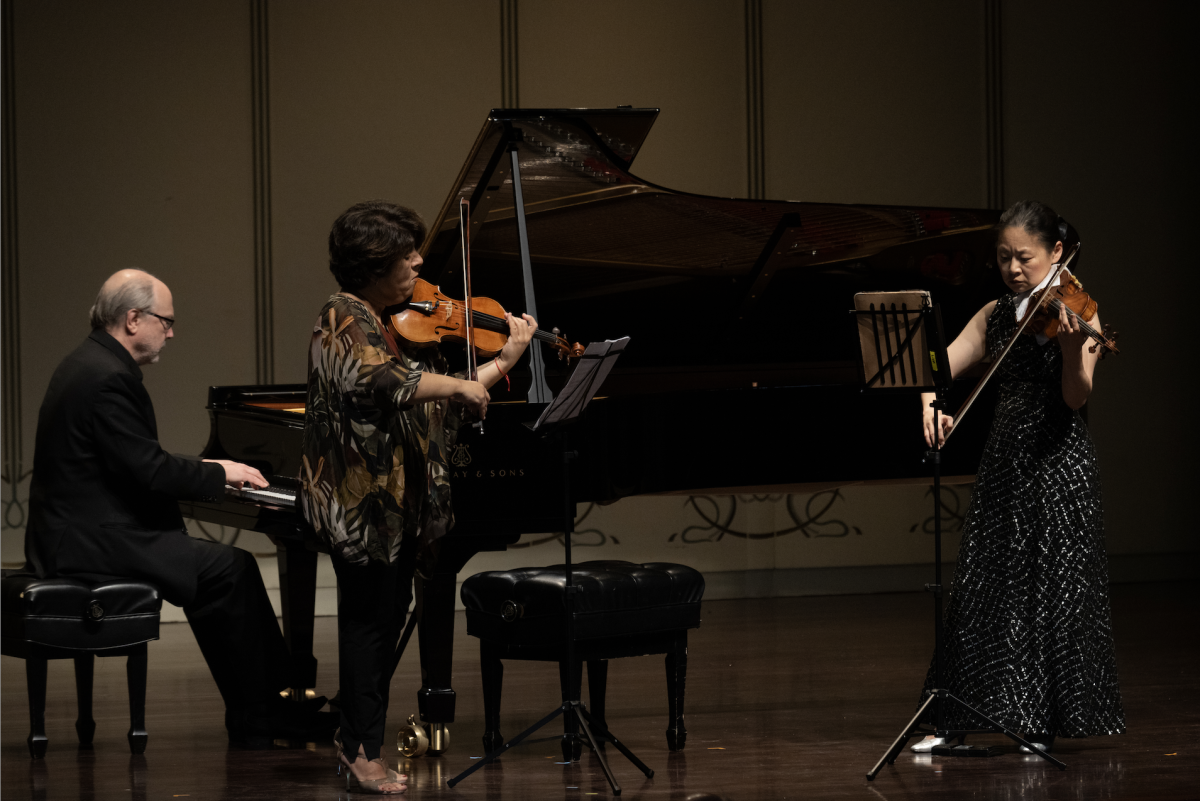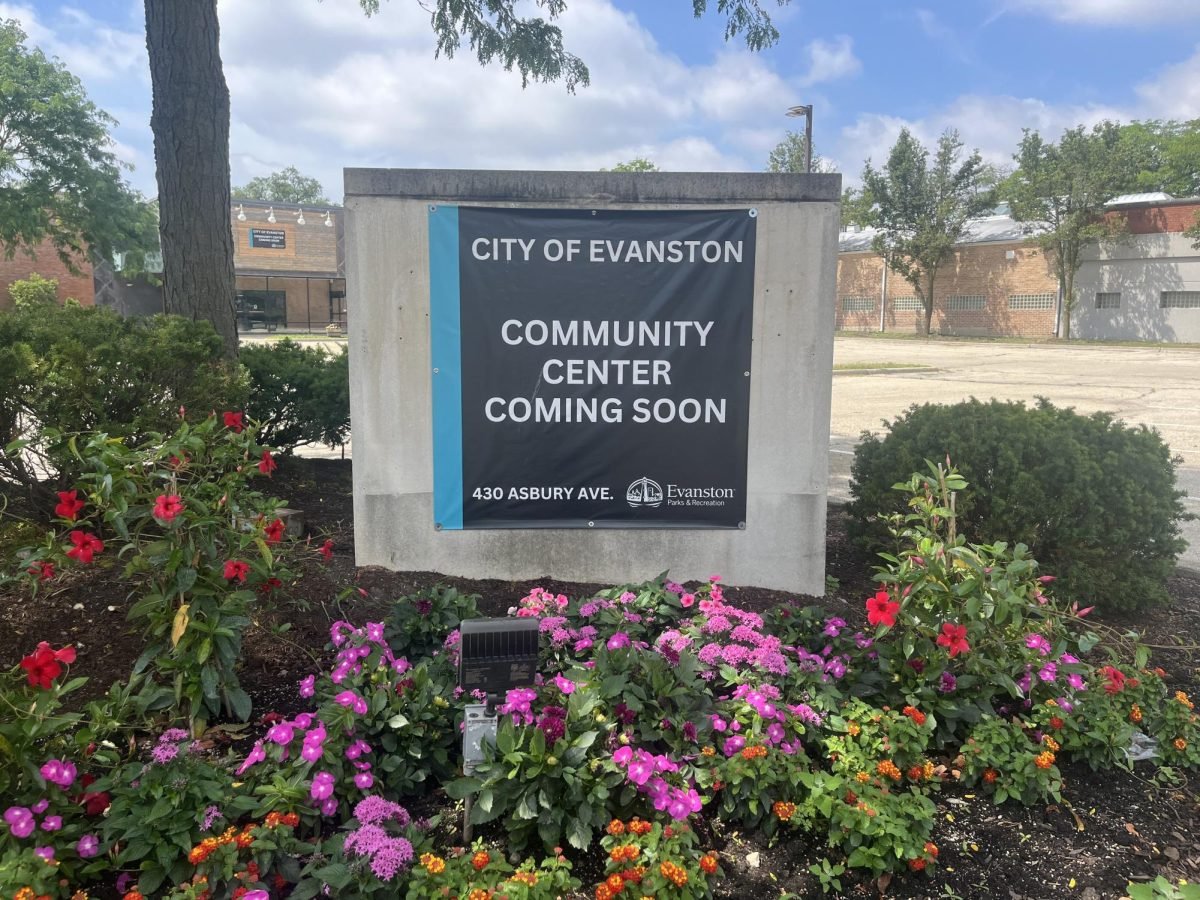Northwestern sits about 12 miles from the skyscrapers of downtown Chicago. The transportation tentacles of the nation’s third-largest city stretch all the way to Evanston, giving NU students a plethora of opportunities to move about the Chicago area. With tree-lined sidewalks, a protected bike path along Sheridan Road and three rail stops just blocks away from campus, the area adjacent to the University provides a spectrum of different options to explore. Let’s take a look at some.
Rail
Both of Chicago’s rail services run through Evanston: the Chicago Transit Authority train and the Metra.
The CTA (better known as the L train) is the more traditional urban rail system, making frequent stops as it moves toward downtown. The Purple Line on the CTA makes three stops adjacent to campus, at Davis, Foster and Noyes stations. It takes students as far as Howard station, where they can transfer to the Red Line and continue south. A ride into downtown Chicago via the L typically takes an hour and costs $2.50.
The Purple Line Express runs weekdays starting just after 2 p.m. and continues all the way into The Loop, making less frequent stops than normal CTA trains.
The Metra is Chicago’s commuter train, known for its signature double-decker cars. It’s much faster than the CTA, making only a few stops and whisking riders into downtown Chicago in approximately 20 minutes. However, the Metra also runs less frequently than the CTA, especially at off-peak times, and usually costs at least double the CTA fares to get into downtown Chicago.
Traveling north to south is very easy via rail, but the weakness lies in the east-west transit. Moving between suburbs or Chicago neighborhoods not directly adjacent to The Loop poses a challenge because almost all CTA trains are designed to shepherd passengers toward downtown.
Bus
If the CTA leaves a void in east-west transportation, Pace — the suburban bus service — at least somewhat fills it.
Perhaps the most used bus by Northwestern students is the 250 line, which leaves every 20 minutes on weekdays (every hour on weekends) from the Davis rail station. It moves west through Skokie, delivering passengers to O’Hare International Airport about an hour after their ride commences. Outside of hitching a ride, the Pace 250, at $2 per trip, is the cheapest way for students to get from O’Hare to campus.
Northwestern students also have a unique bus route available to them: the University’s Intercampus shuttle. It runs fairly frequently from Ryan Field (at the very north of the Evanston campus) all the way to Northwestern’s Chicago campus in The Loop. Although the ride is long, it’s free to all students, making it the most cost-effective route to The Loop.
Bikes
Many students own bikes to move about campus, a form of transportation especially enabled adjacent to campus. Sheridan Road has a protected bike lane stretching the length of campus and areas alongside campus are fairly bikeable as well.
Students who do not own bikes can rent them through Divvy, a subsidized bikeshare program. Bikes cost approximately $11 per hour, and about a half dozen stalls are located within walking distance of campus.
Rideshare
Many students, especially those who are trying to move east-west, turn toward rideshare. While the most expensive form of transit, the various rideshare options give students unparalleled convenience. Uber and Lyft are popular both to move students to outings in Chicago and to shuttle students to O’Hare.
However, a unique rideshare opportunity available to students is a discount on a Zipcar membership. Those with driver’s licenses can rent cars through the platform for prices starting at about $11 per hour. Membership to the service typically costs $90 per year, but Northwestern students receive a $65 discount. Zipcar lots are located throughout Evanston and Chicago, including one at the parking lot outside of the Garrett-Evangelical Theological Seminary.
There’s also one unique rideshare service only open to community members: Safe Ride. From 7 p.m. to 3 a.m, University-commissioned cars are available to pick students up and drop them off in most parts of Evanston. The service is free to students and is meant to help students navigate safely during the nighttime. While cost-effective, the service can sometimes be slow, with waiting times up to 45 minutes if a vehicle is not in the area. Students can download the Northwestern Safe Ride app to gain access.
Accessible Transit
For those who qualify for accessible transportation, there are a few options in Chicagoland. The City of Evanston provides limited accessible bus service for those who qualify. Interested people can inquire about approval at the Levy Senior Center.
Additionally, Pace provides taxi cab services and some bus services for those who qualify.
Email: [email protected]
Twitter: @charcole27
Related Stories:
— University-backed transportation options make Chicago commuting more accessible, students say
— Disability justice activists demand more accessible emergency transportation in Chicago area
— CARP transportation plans should address environment, not just climate, organizers say











